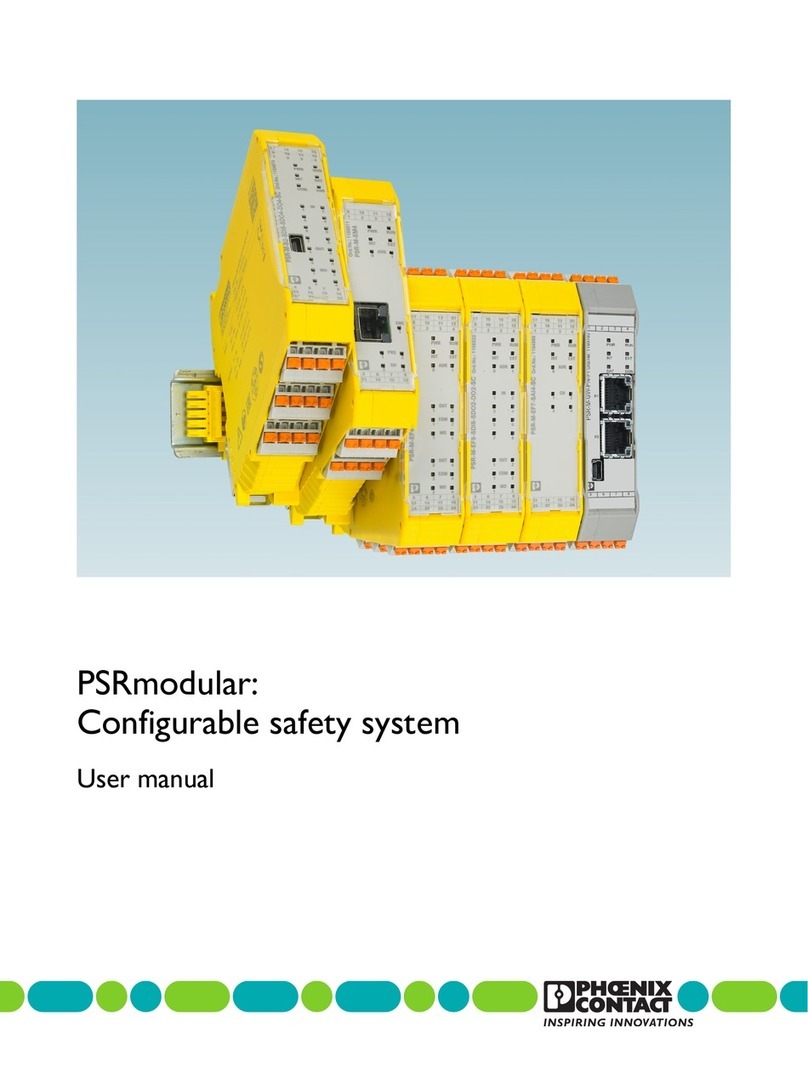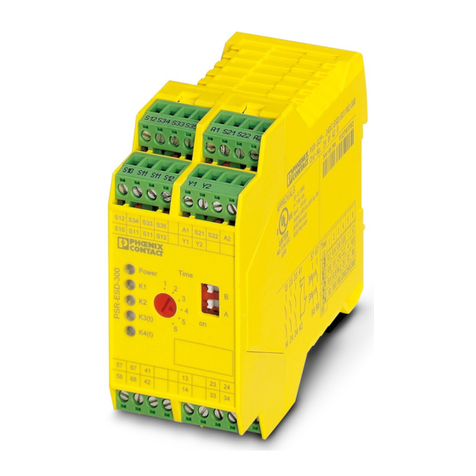
AXL F SSDI8/4 1F
6PHOENIX CONTACT 106887_en_01
4 Assembly, removal, and electrical installation ..........................................................................29
4.1 Assembly and removal ........................................................................................ 29
4.1.1 Unpacking the module ......................................................................... 29
4.1.2 Preparation and assembly ................................................................... 29
4.1.3 Setting the DIP switch .......................................................................... 30
4.1.4 Mounting and removing modules ........................................................ 31
4.2 Electrical installation ............................................................................................ 33
4.2.1 Electrical installation of the Axioline F station ....................................... 33
4.2.2 Electrical installation of the module ...................................................... 33
5 Parameterization of the module ................................................................................................35
5.1 Parameterization in a SafetyBridge system ......................................................... 35
5.2 Parameterization of the safe inputs...................................................................... 36
6 Duration of a safety demand.....................................................................................................39
7 Connection examples for safe inputs ........................................................................................41
7.1 Explanation of the examples................................................................................ 41
7.2 Measures to achieve a specific safety integrity.................................................... 42
7.3 Single-channel assignment of safe inputs ........................................................... 44
7.3.1 Notes ................................................................................................... 44
7.3.2 Cross-circuit monitoring enabled ......................................................... 44
7.3.3 Cross-circuit monitoring disabled, supply through T1 .......................... 46
7.3.4 Supply through OSSD .......................................................................... 48
7.4 Two-channel equivalent assignment of safe inputs ............................................. 50
7.4.1 Notes on errors .................................................................................... 52
7.4.2 Cross-circuit monitoring enabled, supply through T1 and T2 .............. 53
7.4.3 Cross-circuit monitoring disabled, supply through a clock
output or external supply ...................................................................... 55
7.4.4 External supply (OSSD) ....................................................................... 58
7.5 Two-channel non-equivalent assignment of safe inputs ...................................... 60
7.5.1 Notes on errors .................................................................................... 62
7.5.2 Cross-circuit monitoring enabled, supply through T1 and T2 ............... 63
7.5.3 Cross-circuit monitoring disabled, supply through a clock
output or external supply ...................................................................... 64





























